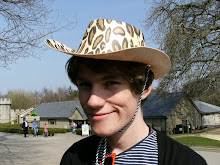CRIME:I have looked at posters from each decade and through semiotic analysis, have picked out key features and motifs, that appear through time.
The most obvious similarity is colour scheme. Most, if not all, the posters I have analysed feature a red, black, and white colour scheme. It seems our associations with red and blood, and black and evil, are not going to change and hence have been popular over time, the white making contrast to the colours, and often representing a good, pure side of a narrative.
A second recurring design feature is bold, masculine typefaces, often using capital letters. I believe this to be as the crime genre is typically masculine oriented, and this style has military, or law enforcement connotations.
The posters a generally dominated by male characters. They are often dressed in typical costume: either dark coat and hat, or smart, gangster suit, and more often than not are sporting an intense look. Occasionally there is a female character in the posters, and when there is she is used to connote sex appeal, or vulnerability, and hence needing rescue from the male characters we see.
The gun motif reoccurs across most of the posters, this may seem obvious as symbol of the genre, however sometimes it is subtly placed and expresses the genre without being explicitly in your face. If the gun does not appear, another weapon, a body, or an offensive position replaces it.






